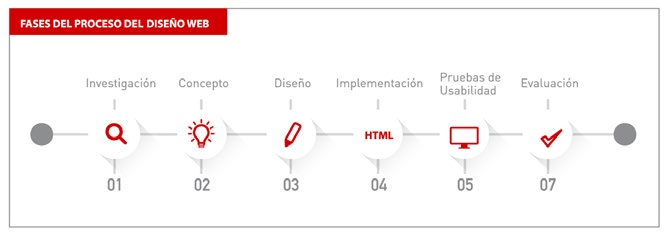Graphic design and its influence in the development of web design interface.
##plugins.themes.bootstrap3.article.main##
Abstract
We live in a globalized world where people seek information immediately through the Internet. Increasingly, there is a need for clear and effective visual communication through interface design for the web, which, in addition to conveying a concept, could achieve empathy with users. In this context, this article aims to analyze graphic design elements that influence the development of interface design, linking usability, functionality and aesthetics. The results obtained as a product of this analysis emphasize the importance of working graphic design together with usability for a satisfactory user experience.
##plugins.themes.bootstrap3.article.details##

This work is licensed under a Creative Commons Attribution-NonCommercial-ShareAlike 4.0 International License.
- Attribution — You must give appropriate credit , provide a link to the license, and indicate if changes were made . You may do so in any reasonable manner, but not in any way that suggests the licensor endorses you or your use.
- NonCommercial — You may not use the material for commercial purposes .
- No additional restrictions — You may not apply legal terms or technological measures that legally restrict others from doing anything the license permits.
- ShareAlike — If you remix, transform, or build upon the material, you must distribute your contribution under the same license as the original. NOTE: This point applies to numbers 1 to 20 of the magazine with the previous CC-BY-NC-SA 4.0 license. Does not apply to the new CC BY-NC 4.0 license from Volume 11, Number. 21 (2024).
References
Allanwood, G., Beare, P. (2015). Diseño de Experiencias de Usuario, Cómo crear diseño que gustan realmente a los usuarios. Barcelona: Editorial Parramón Paidotribo.
Anderson, S. (2011). Diseño que seduce, Cómo crear webs y aplicaciones atractivas al usuario. Madrid: Ediciones ANAYA Multimedia.
Comisión Económica para América Latina y el Caribe (CEPAL). (2016). La nueva revolución digital: de la Internet del consumo a la Internet de la producción. Recuperado de http://repository.eclac.org/bitstream/handle/11362/38604/ S1600780_es.pdf?sequence=4&isAllowed=y
Krug, S. (2014). No me hagas pensar. Madrid: Ediciones ANAYA Multimedia.
Marshall, L., Meachem, L. (2012). Cómo utilizar la tipo- grafía. Barcelona: Editorial BLUME
Martínez, J., Higuera, M., Aguilar, E. (2013). Enfoque metodológico para el diseño de interfaces durante el ciclo de vi- da de desarrollo de software. http://revistas.uis.edu.co/index. php/revistagti/article/view/3846/4199
Nilsen, J., Pernice, K. (2010). Técnicas de Eyetracking para usabilidad Web. Madrid: Ediciones ANAYA Multimedia.
Pratt, A., Nunes, J. (2013). Diseño Interactivo, Teoría y aplicación del DCU. Barcelona: Editorial Océano, S.L.
Quispe, A. (2014). Usabilidad web para usuarios daltónicos. Recuperado de https://revistas.upb.edu.co/index.php/ puente/article/view/7178/6552
Salmond, M., Ambrose, M. (2014). Los fundamentos del diseño interactivo. Barcelona: Editorial BLUME
Rodríguez, A., Vera, P., Marko, I., Merchán, V., Va- lles, G. (2016). Evaluación de la Usabilidad por medio de Usuarios Finales. Recuperado de http://sedici.unlp.edu.ar/ bitstream/handle/10915/54060/Documento_completo.pdf- PDFA.pdf?sequence=1
Torres, G. (2015). Elementos de la comunicación visual a considera en le desarrollo de material didáctico digital. Recuperado de http://journals.epistemopolis.org/index.php/tec- nologiasedu/article/view/961/525
Wood, D. (2015). Diseño de Interfaces, Introducción a la comunicación visual del diseño de interfaces de usuario. Barcelona: Editorial Parramón Paidotribo.






















